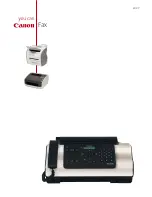
29
2
j
Raise the presser foot lever.
k
Pull the fabric to the left side of the machine,
and then pass the threads through the thread
cutter to cut them.
a
Thread cutter
Memo
●
When the foot controller is plugged in,
(start/stop button) cannot be used to start
sewing.
●
When sewing is stopped, the needle remains
lowered (in the fabric). The machine can be
set so that the needle will stay up when
sewing is stopped. For details on setting the
machine so that the needles stay up when
sewing is stopped, refer to “Changing the
needle stop position” (page 10).
■
Sewing reinforcement stitches
When sewing stitches other than straight or zigzag
stitches that are secured with reverse stitching,
pressing
(reverse/reinforcement stitch button)
sews reinforcement stitches, 3 to 5 stitches on top
of each other.
a
Reverse stitching
b
Reinforcement stitching
Memo
●
Whether reverse stitches or reinforcement
stitches are sewn depends on the stitch that
is selected. For details, refer to “Stitch
settings” (page 56).
Thread tension
The thread tension will affect the quality of your
stitches. You may need to adjust it when you change
fabric or thread.
Memo
●
We recommend that you do a test sample
on scrap of a fabric before you start to sew.
■
Correct tension
Correct tension is important as too much or too
little tension will weaken your seams or cause
puckers on your fabric.
■
Upper tension is too tight
Loops will appear on the surface of the fabric.
Note
●
If the bobbin thread was incorrectly
threaded, the upper thread may be too tight.
In this case, refer to “Lower threading”
(page 14) and rethread the bobbin thread.
Solution
Reduce the tension by turning the upper
tension-control dial to a lower number.
1
2
1
2
3
4
a
Wrong side
b
Surface
c
Upper thread
d
Lower thread
1
2
3
4
5
a
Wrong side
b
Surface
c
Upper thread
d
Lower thread
e
Loops appear on
surface of fabric
4
3
5
Summary of Contents for MS-4
Page 71: ......
















































